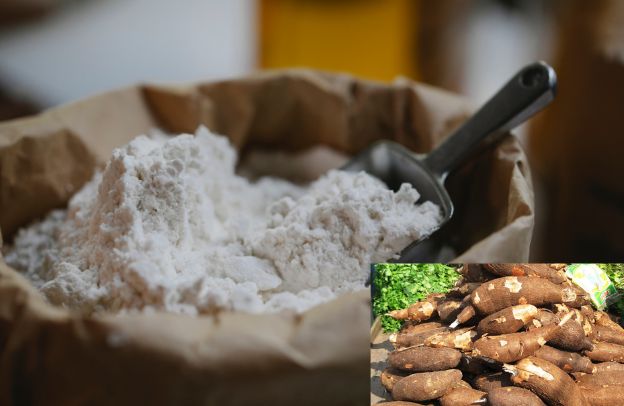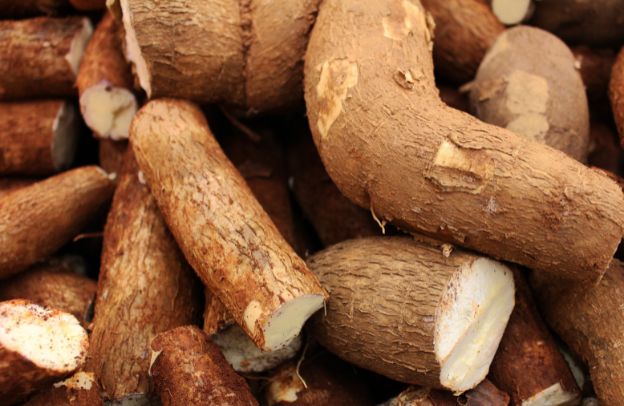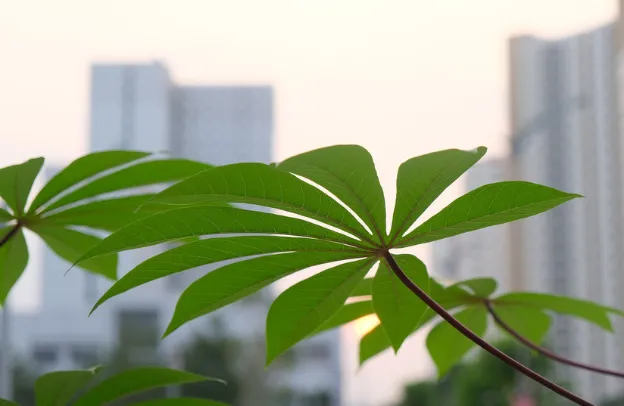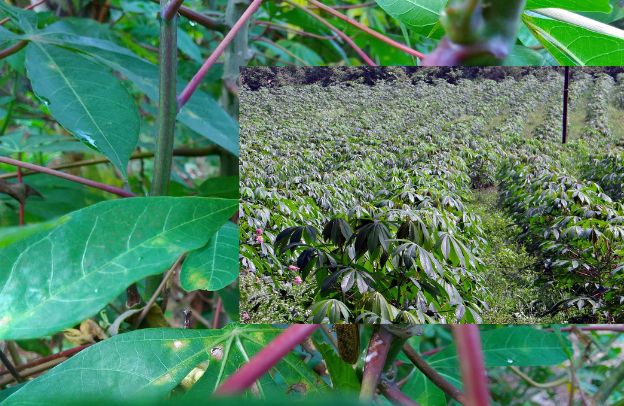How to Grow Cassava to Increase Your Harvest

Are you interested in boosting your cassava harvest and maximizing your profits? You’re in the right place! Cassava has been a vital crop in many regions worldwide, prized for its resilience and versatility. Farmers can tap into its potential as a highly profitable crop, with growing demand across industries ranging from food production to bioenergy.
Take your Business Storytelling to the next level through our Story To Asset Transformation Framework.
This hardy root vegetable thrives in challenging conditions where other crops struggle to survive. However, to truly unlock its potential, it’s crucial to understand cassava’s specific needs throughout the growing season. From selecting the ideal field for planting to managing pests and timing the harvest for maximum yield, every step plays a key role in your farming success.
Fortunately, modern precision agriculture platforms offer farmers real-time insights, alerts on potential threats, and easy-to-use management tools that make these tasks simpler and more effective. Ready to take your cassava farming to the next level? Let’s dive in!
There are different methods to grow cassava. However, the most popular method is planting it in the ground where it will grow into a plant with roots that will reach down deep enough to find moisture.
When you plant cassava, you should also prepare your soil by adding compost or manure before planting your cassava stems.
What is cassava and how do you Grow it?
Cassava is a root crop that grows well in tropical and subtropical climates. It’s the main food staple in many parts of Africa, Asia, and Latin America. This root vegetable is also used to make
- Flour,
- Bread,
- Starch
- and even beer among other products.
Cassava roots have been harvested since before the start of human practices of agriculture. It is said that the cultivation of cassava dates back to about the second millennium BC when it was grown in South America by pre-Incan people.
See also Processing and Marketing of Selected Cassava Products in South-east Nigeria
The plant can be grown as an annual or perennial plant, depending on the climate it is being planted in. It can also be propagated from its roots or stem cuttings instead of seeds with ease as they are very hardy plants that can survive harsh conditions like drought or frost.
Tips for Planting and Growing Cassava
Cassava plants can grow in a range of soils, but they prefer well-drained soil. They are not sensitive to freezing temperatures and will continue to grow as long as they have full sun exposure.
| Factor | Optimal | Minimal |
|---|---|---|
| Rainfall | 40 inches (1000 mm) annually | 2 inches (50 mm)/month for at least 6 months a year |
| Direct sunlight | 10–12 hours | 6–8 hours |
| Temperature | 77–90°F (25–32°C) | 68°F (20°C) |
| Soil type | Deep, well-drained, fertile, light sandy loam or loamy sand | 12-inch (30-cm) deep, not overly clayey, sandy, or stony soil |
| Soil pH | 5.5–6.5 | 4.2–4.4 (if aluminum is below 80% of soil CEC) |
You can grow cassava (planting to harvesting) over several months, depending on the region and climate. Here are some tips for planting and growing cassava plants for better yields:
- Choose your location – The ideal place to plant cassava should have full sun, good drainage, and soil with high fertility levels.
- Prepare the soil – You need to prepare the soil by mixing compost or manure into it before planting your cassava plants. If you want to grow large plants, then you will also need to add sand or small stones into the soil before planting them as well as fertilizing them with nitrogen-rich fertilizer regularly during their growth period.
- Cassava Planting – Like other plants, cassava needs well-drained soil, modest rainfall, and full sun. But they can survive without freezing temperatures which makes them suitable for many locations, like those in the tropics or the upper United States.
Tools You Should Have When Growing Cassava
Soil amendments are important for any type of agricultural crop. They include soil, compost, and topsoil. To use these, you will need to check with your local garden or hardware store and buy what’s available there.
You should use organic fertilizer produced by local farmers. The cassava root is better as a natural resource, but it is best to use both.
Weed Management
To effectively manage weeds during the early stages of growth, apply a contact and/or pre-emergent herbicide for the first three months (vegetative stage). After this period, hand-weeding with hoes is typically recommended, if necessary, since the crop’s expanded canopy should naturally suppress further weed growth.
Fertilization
Always conduct a soil test to determine the appropriate fertilizer types and application rates.
- If a soil test is unavailable, a general fertilization guideline for cassava is:
- NPK (12:24:12) at 336 kg/ha, applied 6 weeks after planting, followed by 16:8:24 at 16 weeks after planting.
- OR
- Mixtures of single fertilizers such as Calcium Nitrate, Muriate of Potash, and Triple Super Phosphate at 114-209 kg/ha N, 25-37 kg/ha P, and 240-335 kg/ha K, applied at both 6 and 16 weeks after planting.
- On average, apply one handful (85-113g) of fertilizer per plant for each application.
- Position fertilizers 15-45 cm from the stem’s base in 10-15 cm deep drill holes. This strategic placement reduces fertilizer runoff and ensures better nutrient absorption.
- Fertilizing at 16 weeks after planting is essential for optimal tuber bulking, ensuring healthy and abundant yields.
By following these best practices, your cassava crop will thrive, leading to strong growth and enhanced productivity.
How to Harvest & Store Cassava Tubers
Harvesting cassava should be done at the right time. This is because the plant will start dying soon after they have been harvested. You should harvest your cassavas when they are not flowering anymore and are still green.
A study found that cassava roots can last up to three weeks when treated with protection from contaminants, using a bag, and stored in the fridge.
Traditional ways of keeping cassava roots fresh for longer can be very expensive as they require washing, drying, and placing them in a finished product. Cassavas Storage by heaping or soaking, in pits, or by coating can last up to 2-3 days before it needs to be processed again
Avoid wading in muddy or water-logged areas, as the plants are usually coated with clay. Store them in a bucket or submerged in water for 1 – 2 days before use, otherwise, they may become damp.
How to Avoid Problems While Growing Cassava Roots In Containers and Pots
Cassava is a type of root vegetable that is widely used in cooking. The roots can grow a lot, but they can rot easily if they are not properly cared for. Cassava roots need lots of water, sunlight, and nutrients to grow well.
So, it’s important to choose the right container or pot and ensure that it has enough space for the plant to grow well. The plant also needs good drainage so that excess water doesn’t build up and cause root rot problems while growing in containers and pots.
It’s important to keep your plants healthy so that they don’t die from root rot or other disease-related issues.
Important Tips and Tricks for All Growers of Cassava Roots
Growers of Cassava Roots are always looking for new and innovative ways to grow their own food. One way to do this is by using a hydroponic system. This allows growers to have control over the environment in which they are growing the plants. They can adjust the temperature, humidity, and light levels to maximize their yield of casserole roots.
Hydroponic cultivation is a growing trend in agriculture. It involves growing plants without soil; instead, they are cultivated in a system of water with chemical compounds that provide the nutrition they need. There are two basic styles: NFT systems and deep-water float systems.
One important factor that all Cassava growers should consider when choosing a hydroponic system is how easy it is to maintain the system. Systems that require a lot of manual labor will be difficult for many growers to maintain on their own.
It is important that you choose a hydroponic system that has features like automated systems or self-cleaning systems so you can focus on your plants and not worry about your hydroponic system breaking down.
Conclusion on How to Grow Cassava to Increase Your Harvest
There are many different ways to grow cassava, and each one has its own set of benefits and drawbacks.
Cassava plants can grow up to six feet tall and produce an abundance of leaves that are harvested and made into flour. The plant is also known as manioc or yuca depending on the region it is grown in.
There are two ways to grow cassava: by direct seeding or by planting it from cuttings. Direct seeding involves digging up the entire root while planting from cuttings involves removing a portion of the root with healthy roots attached so they can be placed into the soil to grow new plants.
Take your Business Storytelling to the next level through our Story To Asset Transformation Framework.






